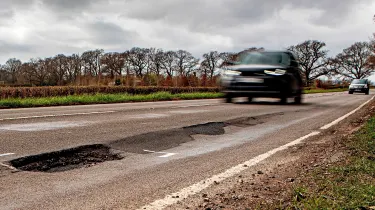
If you thought the condition of roads in England couldn’t get any worse, data just released from local authorities and National Highways suggests you’re at least partly right; the percentage of A-roads labelled ‘red’ - those that should have been considered for maintenance following automated or visual surveys - remained static in 2024 at four per cent.
The percentage of ‘red’ B and C-roads has also remained unchanged at seven per cent, according to data compiled by the Department for Transport (DfT), but there’s been a significant rise in the number of ‘amber’ classifications across both all A, B and C-roads in England. Between 2020 and 2024, the incidence of ‘amber’ roads - those likely to require maintenance soon - has risen from 24 to 27 per cent, suggesting we’re storing up more trouble ahead. Meanwhile, the proportion of roads surveyed being classified ‘green’ - no further work or investigation needed - has fallen back from 72 per cent in 2022 to 68 per cent in 2024.
According to the DfT’s interactive map, the worst offenders for poor A-roads in ‘red’ condition are Derbyshire in the East Midlands, and various London boroughs including Merton, Newham and Brent, followed by Shropshire in the West Midlands, Bradford and Liverpool. Derbyshire is also among the worst offenders for B and C-roads, along with Dorset and Devon.
The figures are compiled as a percentage of total road length, rather than by numbers of roads, and the DfT’s latest report points out that user perception may not align with statistical measures - not least because drivers may be heavily influenced by the condition of unclassified roads, which are surveyed less frequently.
Responding to the figures, the RAC’s head of policy Simon Williams said it’s “concerning to see that more roads that were in reasonable ‘green’ condition have now deteriorated. “We badly need to end the decline in the condition of our local roads, so we hope the Government’s new approach to highways funding will enable councils to plan longer-term maintenance that finally addresses this,” he continued. Williams also said he’s encouraged that the government is talking about the need for preventative maintenance as key to improving conditions for the future.
